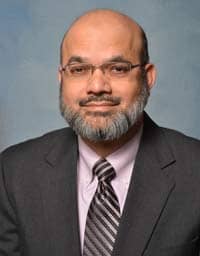By Arif Subhan, MS, CCE, FACCE
 Healthcare technology strategic planning is one of the topics in the CCE examination under the heading of Technology Management, which accounts for 25% of the exam questions, the largest portion of the CCE examination.
Healthcare technology strategic planning is one of the topics in the CCE examination under the heading of Technology Management, which accounts for 25% of the exam questions, the largest portion of the CCE examination.
Healthcare technology strategic planning is a process of determining a hospital’s medical technology requirements and establishing priorities. The priorities are based on a number of factors, including the strategic needs of the hospital and a variety of fiscal, risk, clinical, and technical factors.1,7
According to the ECRI Institute, if the planning process for healthcare technology (that is, medical equipment) is implemented correctly, it ensures the availability of suitable medical equipment in the hospital all the time.2 It also allows for the best use of the hospital’s capital investment. Needless to say, up-to-date and functioning medical equipment also improves the quality of patient care.
Healthcare technology strategic planning can be divided into two broad categories. The first is planning for new or additional equipment and technologies. The second involves the replacement and upgrading of older existing equipment.
New Equipment Planning
When new or additional facilities are built, the biomedical or clinical engineering staff works closely with the architects, engineers, clinical and nursing staff, and other hospital personnel in the planning for new equipment. With their understanding of the requirements for medical equipment, biomedical or clinical engineering staff can provide recommendations on the equipment location, evaluate safety and technical requirements, and apply human factors engineering principles to the process of designing the area.2
Biomedical or clinical engineering also assists in researching the new technologies, assessing the requirements, and planning for the implementation of new technologies or new categories of medical equipment. For example, PET/MRI is a new hybrid imaging technology, combining magnetic resonance imaging and positron emission tomography, that has promise for oncologic applications.3 There are other new emerging technologies in a wide range of clinical areas, including surgery.4
Equipment Replacement Planning
Biomedical or clinical engineering can also play an important role in the renovation process for existing facilities.5 They possess a broad background in engineering principles and also understand the practice of medicine, healthcare technology, electrical and mechanical safety, and regulations, as well as codes that must be applied to the new construction process. They should be closely involved in construction from the initial design stages, throughout the entire construction period, during the postconstruction inspection, and up through the admission of patients to the newly built area.
Biomedical or clinical engineering staff should likewise be involved in the construction planning, including the following activities:
- Setting specifications for space and location of medical equipment.
- Making sure that the appropriate codes, standards, and regulations are followed.
- Ensuring that proper specifications are provided for medical equipment interconnectivity.
- Specifying electrical power requirements for the medical equipment (for example, ampacity and emergency power).
- Establishing specifications for medical gas and vacuum systems.
They can provide guidance in replacement of old equipment by developing replacement recommendations that use various factors, including age, technology status, maintenance cost, the availability of parts and support, utilization, and safety and downtime.6
Another part of equipment replacement planning is the upgrade (of both software and hardware) of existing medical equipment. For example, some existing newer CT scanners can be upgraded using radiation dose reduction applications.
More details about the exam are provided in the 2013 Candidate Handbook, available at the Healthcare Technology Foundation website at thehtf.org. 24×7
Review Questions
1) A hospital’s medical technology priorities are based on the following factors except for which one?
a) Fiscal
b) Clinical
c) Technical
d) Governmental
2) Benefits of medical equipment planning include the following except which one?
a) Availability of suitable medical equipment in the hospital
b) Optimal utilization of financial resources
c) Improvement in the quality of care
d) Availability of the most up-to-date medical equipment in the hospital
3) The biomedical or clinical engineering staff assist in equipment planning by providing recommendations in the following areas except for which one?
a) Safety
b) Technical
c) Clinical
d) Location
4) The biomedical or clinical engineering staff assist in the planning of new technologies by doing which of the following?
a) Researching the new technologies
b) Assessing the requirements
c) Planning for the new equipment
d) All of the above
5) The following factors can be used for equipment replacement except for which one?
a) Age
b) Technology status
c) Availability of parts and support
d) Environmental factors
6) The biomedical or clinical engineering staff can assist with which of the following activities of construction planning?
a) Ensuring that appropriate codes and regulations are followed
b) Specifying electrical power requirements for the medical equipment
c) Helping with the specifications for space and location of medical equipment
d) All of the above
See answers below
References
1. American College of Clinical Engineering. Clinical Engineering Certification Study Guide, V3.0. Available at: http://www.accenet.org. Accessed October 17, 2013.
2. Medical equipment planning. Health Devices. 1997;26(1):4-5, 8-10, 12.
3. New imaging technology promising for several types of cancer. Available at: http://www.sciencedaily.com/releases/2013/08/130829105751.htm. Accessed October 17, 2013.
4. New technologies in surgery. Available at: http://www.iom.edu/~/media/Files/Activity%20Files/Disease/NCPF/2012-OCT-08/Hu2.pdf. Accessed October 17, 2013.
5. Facilities construction: Involving the clinical engineer. Health Devices. 1988;17(2):62-65.
6. Clark JT. Medical equipment replacement. In: Atles L, ed. A Practicum for Biomedical Engineering & Technology Management. Dubuque, Iowa: Kendall/Hunt Publishing Company; 2008.
7. Ticer J. Join the team. Integrating medical equipment planning into the construction process. Health Facil Manage. 2011;24(5):23, 25-28.
Arif Subhan, MS, CCE, FACCE, is the chief biomedical engineer at the VA Greater Los Angeles Healthcare System, Calif; adjunct assistant professor, biomedical engineering, University of Connecticut; and a member of 24×7’s editorial advisory board. The suggestions and views expressed here are those of the author. They do not represent the views of the Department of Veterans Affairs or the University of Connecticut. For more information, contact [email protected].
Answers: 1—D, 2—D, 3—C, 4—D, 5—D, 6—D





